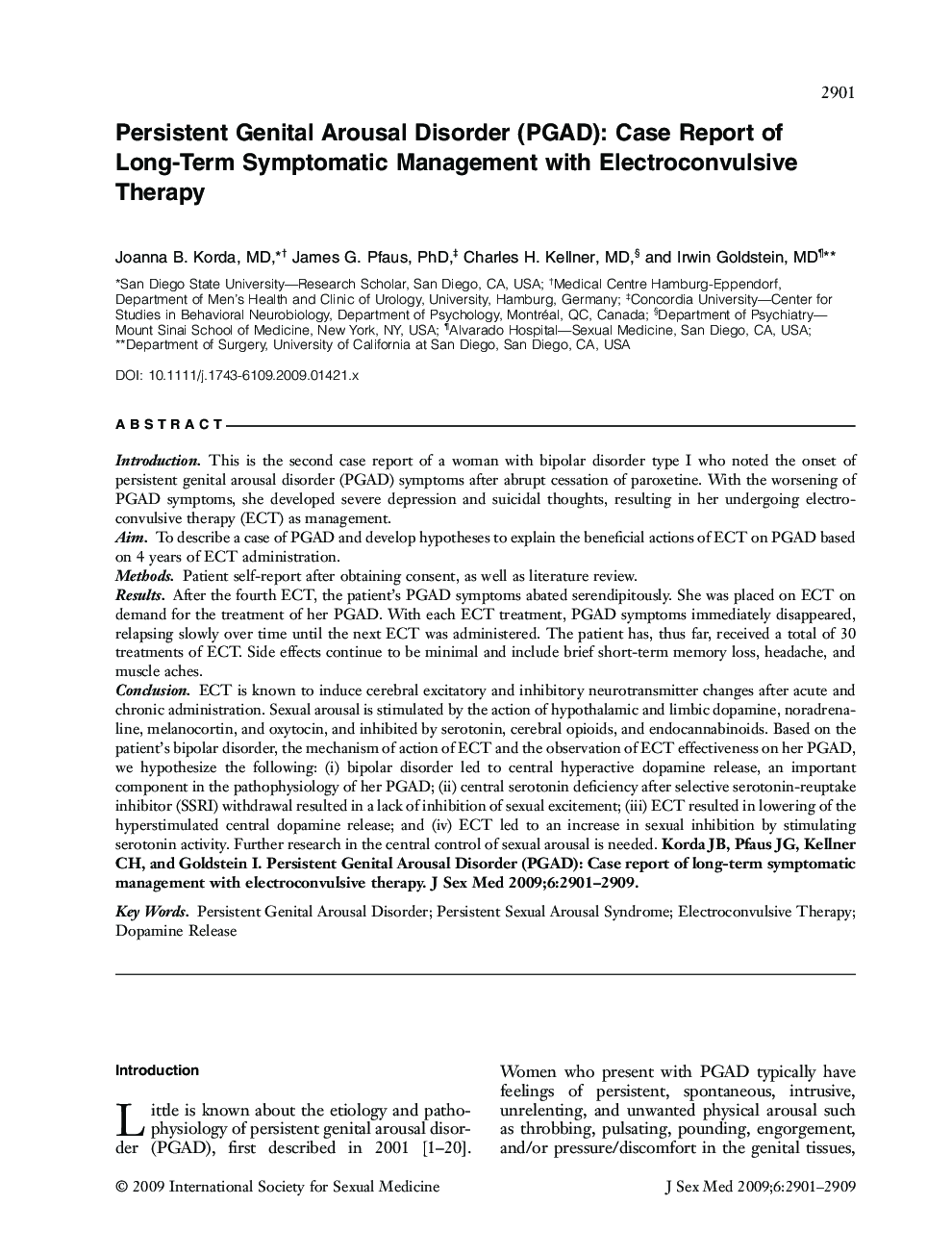| Article ID | Journal | Published Year | Pages | File Type |
|---|---|---|---|---|
| 4272487 | The Journal of Sexual Medicine | 2009 | 9 Pages |
Abstract
ECT is known to induce cerebral excitatory and inhibitory neurotransmitter changes after acute and chronic administration. Sexual arousal is stimulated by the action of hypothalamic and limbic dopamine, noradrenaline, melanocortin, and oxytocin, and inhibited by serotonin, cerebral opioids, and endocannabinoids. Based on the patient's bipolar disorder, the mechanism of action of ECT and the observation of ECT effectiveness on her PGAD, we hypothesize the following: (i) bipolar disorder led to central hyperactive dopamine release, an important component in the pathophysiology of her PGAD; (ii) central serotonin deficiency after selective serotonin-reuptake inhibitor (SSRI) withdrawal resulted in a lack of inhibition of sexual excitement; (iii) ECT resulted in lowering of the hyperstimulated central dopamine release; and (iv) ECT led to an increase in sexual inhibition by stimulating serotonin activity. Further research in the central control of sexual arousal is needed. Korda JB, Pfaus JG, Kellner CH, and Goldstein I. Persistent Genital Arousal Disorder (PGAD): Case report of long-term symptomatic management with electroconvulsive therapy. J Sex Med 2009;6:2901-2909.
Keywords
Related Topics
Health Sciences
Medicine and Dentistry
Urology
Authors
Joanna B. MD, James G. PhD, Charles H. MD, Irwin MD,
